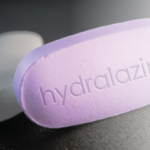On physical exam, you may not find anything immediately. But Dr. Gensler said to keep in mind that psoriasis is more common in the axSpA patient than the general population, so it’s worthwhile to look for signs of it in the nails and behind the ears.
Also, in the lab work-up, C-reactive protein (CRP) helps more than the sedimentation rate in suspected axSpA patients. And with imaging, X-ray is a good place to start, she said, but if it’s negative, move on to MRI of the sacrum, without gadolinium. She said you need to image only the sacrum—spine imaging doesn’t increase diagnostic yield and may produce findings that merely confuse.3
She emphasized the importance of imaging. MRI, she said, “does more than confirm your diagnosis. It will sometimes give you a different diagnosis. … It also gives you prognosis. We know that the higher burden of inflammation a patient has predicts response to therapy. We know if patients have structural change, including fat metaplasia or partial ankylosis, they’re more likely to go on to develop more damage.”
Although inflammatory back pain is the hallmark feature of axSpA (with the best predictors being nocturnal back pain and pain that improves with exercise), inflammatory back pain alone isn’t very useful as a predictor. “If you all you have is inflammatory back pain, then your probability of disease is only around 14%,” Dr. Gensler said.
Uveitis is the most prevalent extra-articular manifestation of axSpA, present about 25% of the time. Research has shown patients with anterior uveitis without a prior diagnosis of arthritis have spondyloarthritis, most commonly axSpA. “This is low-hanging fruit,” she said. “If a patient is referred to you from ophthalmology with HLA-B27 uveitis, you can almost guarantee you will find some form of arthritis in these patients.”
She issued some caution about a recent New England Journal of Medicine study on adalimumab for active noninfectious uveitis. “This study was not meant to include patients with anterior uveitis—the title doesn’t say that,” she said. “This isn’t meant to be used for patients with anterior uveitis alone, and in fact they were excluded from that study.”
The FDA has approved adalimumab only for patients with intermediate, posterior and panuveitis.
When treating to target, she said, choosing your target will prove just as important as how you’ll measure it. “For some patients, that target might be remission,” she said. “Other patients may have other reasons they won’t reach remission, so a low-disease activity endpoint is adequate. So, pick your measure and pick your endpoint, and then follow it.”


